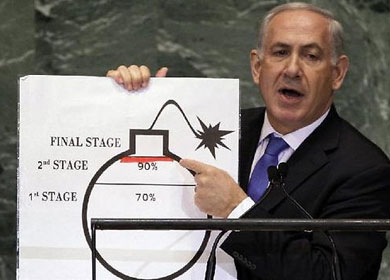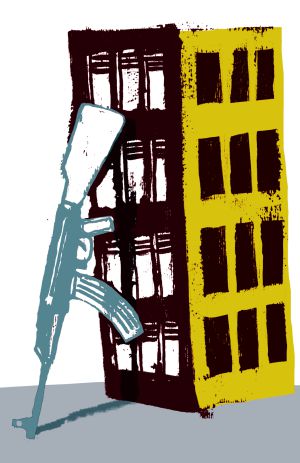XlV Congreso Internacional de la Asociación Latinoamericana de Estudios de Asia y África (ALADAA):
"Asia y África. Conexiones, intercambio y nuevos abordajes académicos desde América Latina".
Homenaje a Kazuya Sakai
13-17 de agosto, 2013
Facultad de Humanidades y Ciencias de la Educación
Universidad Nacional de La Plata
La Plata
Provincia de Buenos Aires
República Argentina
Mesa: Estudios de la colonialidad y las resistencias en el Mundo Árabe contemporáneo ss. XX-XXI.
Coordinadores: Martin A. Martinelli (UNLu/IHAO-CLEARAB UBA), Eduardo Wehbe
(UTDT) y Gabriel F. López (UBA-ISPJVG).
Correos de contacto:
Martin Martinelli martinellima@hotmail.com
Gabriel F. López espartako68@hotmail.com
Eduardo Wehbe e_wehbe@hotmail.com
Presentación
La notable progresión de sucesos históricos de gran significación política que hemos observado en los últimos anos en el mundo árabe ha despertado diferentes reacciones y análisis. En el afán de rotular los eventos, los críticos y analistas designaron a este proceso Primavera árabe,Despertar árabe, Levantamientos árabes y aun yendo más lejos Revoluciones árabes. Más allá de las denominaciones, es evidente que asistimos a un momento histórico de quiebre, esos momentos en que la historia parece tomarse una revancha, por sorpresa, claro, cuando comenzamos a sentirnos seguros del poder explicativo de las categorías que por años nos cobijaron. Y la revancha de la historia tiene que ver con eso. Ante la tendencia inicial a interpretar los hechos desde los modelos habituales, la historia nos obliga a repensar, recategorizar, a tomar distancia para comprender estos fenómenos. Los cuales requieren ser explicados por miradas que actualizan las teorías clásicas como el marxismo y las ponen a dialogar con otras teorías descolonizadoras (subalternistas, poscoloniales, descoloniales), u otras que, por el contrario, ponen en cuestión a viejos paradigmas. Surgen así una serie de interrogantes: ¿Pueden los países árabes hacer la historia? ¿Es posible que comiencen a narrarse por si mismos? .Estamos en presencia de otra ola de descolonización no formal? .Las sociedades árabes quieren salir del circulo vicioso autoritario o el reclamo alcanza solo a mejores condiciones de vida? .Cuales son las verdaderas fuerzas políticas que se liberan? .Cuales son los limites formales de las independencias históricas? .Cual es la proyección de la constitución de subjetividades emancipadas? .Estamos ante un proceso de resistencia que puede ser reconstruido históricamente? y finalmente .Estamos en presencia de un quiebre real de la historia de la región?
La presente mesa en este XlV Congreso de la Asociación Latinoamérica de
Estudios de Asia y África (ALADAA) propiciara el debate y la lectura histórica de los recientes acontecimientos en el mundo árabe junto a aquellos que conformaron las condiciones objetivas y subjetivas actuales, así como también propugnara una posible comprensión desde la clave poscolonial crítica. Sin duda que ese es nuestro propósito, problematizar el conocimiento histórico de la región conocida como Mundo Árabe junto a ello el papel tanto de Israel como de las potencias internacionales. A la vez que mostrar los puntos en común con nuestra Latinoamérica y el llamado Tercer Mundo que nos ayuden a su historización trazando vínculos y diferencias. Lo poscolonial y lo descolonial evocan la tensión entre la superación del colonialismo y la persistencia de la colonialidad y el imperialismo.
La pertinencia de la propuesta parte de que, los actuales sucesos en el mundo árabe “cambiaron la historia”, la capacidad de movilización y trascendencia internacional nos lleva a considerarlos como un proceso vivo que “esta haciendo historia”. El esfuerzo crítico permite una conexión entre modernidad, nacionalismo, colonialismo e imperialismo, términos profundamente ligados. La propuesta aspira a abrir el debate hacia nuevas formas interpretativas de la realidad del conocido euro céntricamente como “Medio Oriente” desde una mirada latinoamericana ya que encontramos entre ambos una empatía epistemológica digna de ser aprovechada para nuestras inquietudes teórico-metodológicas en la comprensión de los mitos y discursos coloniales implicados en los problemas a tratar.
PLAZOS Y FORMATO DE PRESENTACIÓN DE RESÚMENES Y PONENCIAS/ DEADLINES AND FORMAT OF ABSTRACTS AND PAPERS.
PRESENTACIÓN DE RESÚMENES: HASTA EL 15 DE MAYO/ SUBMISSION OF ABSTRACTS: UNTIL MAY 15th
PRESENTACIÓN DE PONENCIAS: HASTA EL 15 DE JULIO/ DEADLINE FOR FINAL PAPERS: UNTIL JULY 15th
Formato de los Resúmenes/ Abstracts
Letra Times New Roman 12, interlineado de 1,5. Extensión máxima de 350 palabras.
It should be typed in Times New Roman 12 point, 1.5 spaced, 350 words in length.
Encabezado con los siguientes datos/It must include:
• Titulo del trabajo/ Title of the paper.
• Autor/a/es, con su pertenencia institucional aclarada en cada caso entre paréntesis, al lado del nombre//Author’s Name and Institutional affiliation in brackets.
• Correo de contacto/E-mail address.
• Mesa a la que envía el resumen/la ponencia//Session to which you send the abstract/paper.
• Adjuntar al resumen un breve curriculum vitae (2-5 renglones) donde se consigne formación, desempeño profesional, etc.//Please, add a brief CV with academic degrees and professional activities (two to five lines).
Formato de las Ponencias/Papers
A4, Márgenes 2,5; Letra Times New Roman 12, interlineado de 1,5, citas en el texto de acuerdo a la manera de citar de APA (citas textuales de hasta 39 palabras en el mismo párrafo, entre comillas y citas textuales de 40 o más palabras, en párrafo aparte con un margen más pequeño que el resto del texto.
Ejemplo de cita textual del autor: González, 2005, p. 47.
Ejemplo de cita no textual: González (2005).
Notas al pie solamente de contenido (no de datos bibliográficos); bibliografía al final del texto (de acuerdo a la manera de citar de APA); paginas numeradas.
La extensión de los trabajos será de entre 12 y 20 páginas.
A4, 2,5 borders; Times New Roman 12 point, 1.5 spaced, quotations according to APA mode (textual quotations up to 39 words in the same paragraph, between quotation marks and textual quotations of 40 words or more, in a different paragraph, with a smaller border).
Example of textual quotation: Gonzalez, 2005, p. 47.
Example of non textual quotation: Gonzalez (2005).
Foot notes only of contents not of bibliographic data; Bibliography at the end of the text according to APA mode); numbered pages.
Extension of papers: between 12 and 20 pages.
TODOS LOS RESÚMENES DEBEN SER ENVIADOS AL/LOS
CORREOS DE LA MESA Y A LA COMISIÓN
ORGANIZADORA DEL CONGRESO (aladaaxiv@gmail.com)
ALL ABSTRACTS MUST BE SENT TO THE SPECIFIC SESSION OF
INTEREST AND TO THE ORGANIZING COMMITTEE
(aladaaxiv@gmail.com)





















































